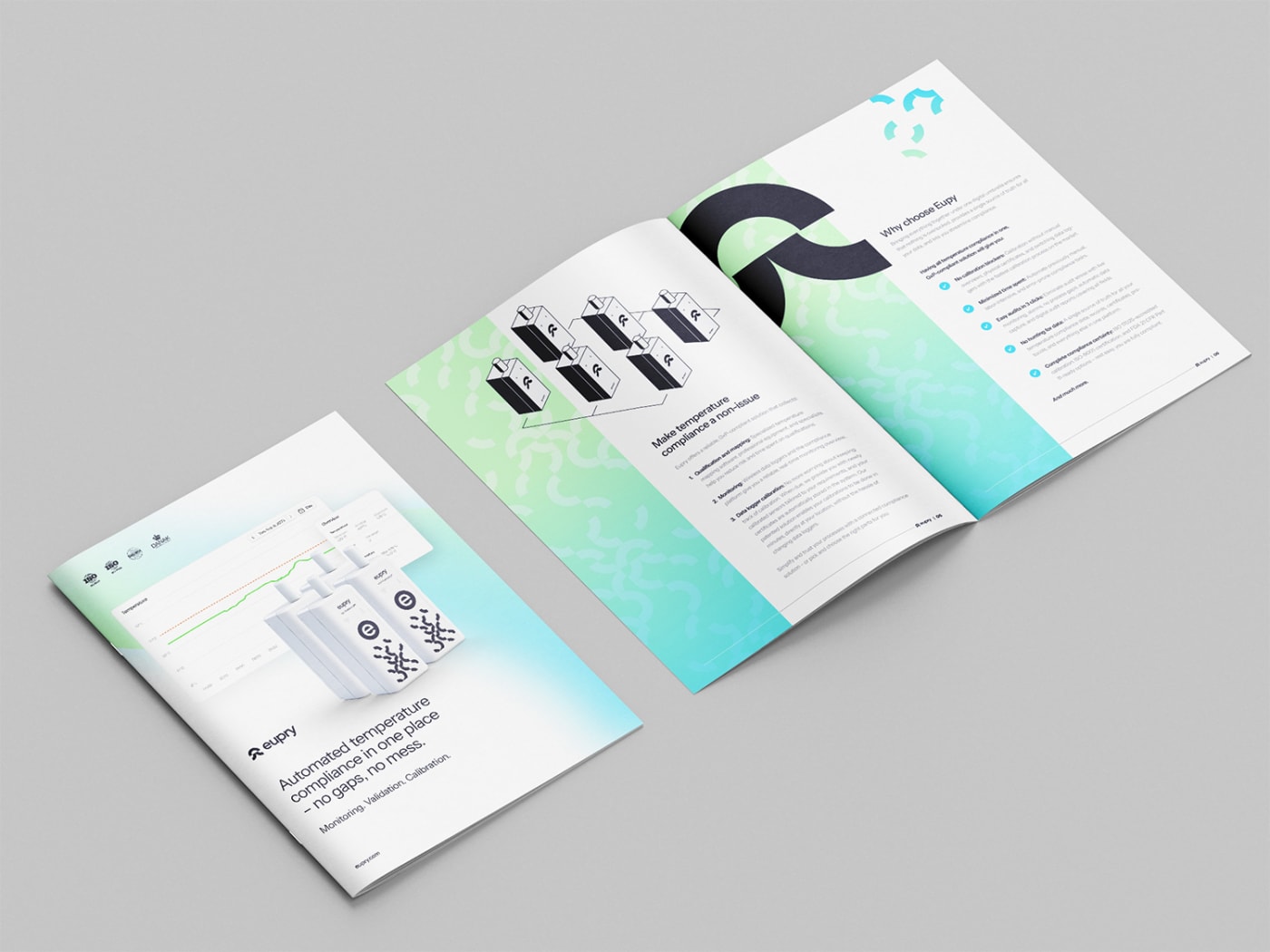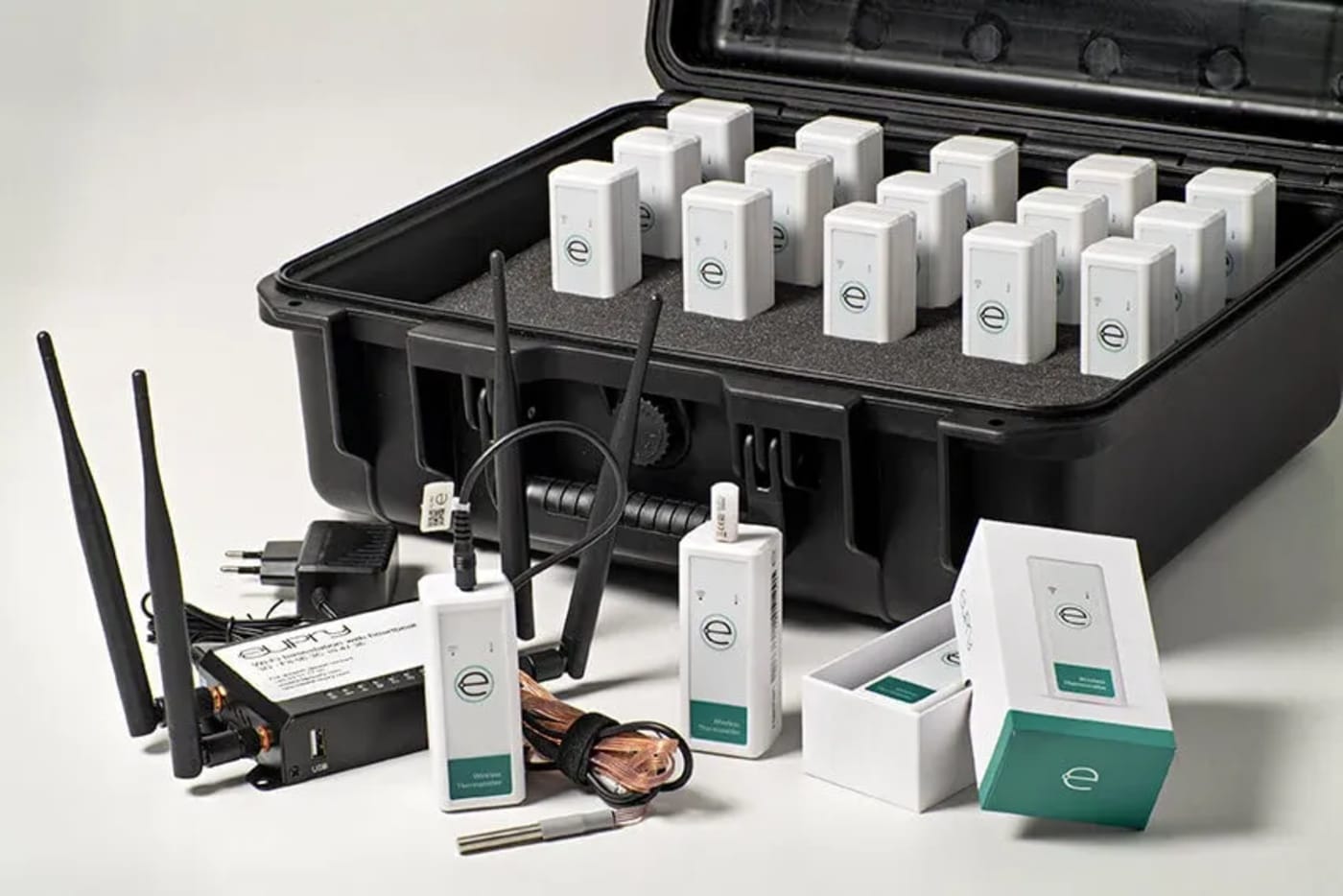
How DSV Sweden conducted a GxP-compliant temperature mapping of their new logistics center
DSV Sweden
|1976, Denmark
Global distribution and logistics: Learn how DSV Sweden successfully validated their cutting-edge logistics center to demonstrate compliance with the requirements for storage of pharmaceuticals.

DSV is responsible for the distribution of pharmaceuticals for some of the biggest pharma companies in the world; thanks to innovative temperature compliance solutions and specialists, they can seamlessly showcase compliance with the strict requirements of these companies. Here is an example of how.
The challenge: Validating a new logistics facility
When handling logistics of pharmaceuticals and other temperature-sensitive products, launching a new facility presents a double challenge:
- ensuring the facility can maintain the necessary conditions to secure the integrity of the products and compliance with relevant regulatory requirements.
- achieving this quickly to minimize downtime to get the facility into operation as fast as possible.
DSV Sweden faced this challenge when opening their new logistics center in Rosersberg, north of Stockholm, gathering the operations of DSV’s three divisions: DSV Solution, DSV Air & Sea, and DSV Road. Located strategically near airports, railways, and motorways, DSV built the center to enhance efficiency in pick-up and delivery times – crucial for maintaining the integrity of sensitive goods.
With this purpose in mind, the facility needed rapid, reliable temperature mapping to guarantee GxP compliance before becoming operational.
In other words, before DSV could utilize the new logistics center, they needed to ensure its ability to maintain precise temperature conditions, a requirement for the safe storage of temperature-sensitive products. The challenge was not just about proving the facility's functionality but doing so in a way that was both swift and compliant with GxP standards.
The role of temperature mapping
Temperature mapping is crucial when storing products sensitive to temperature. A temperature mapping study can determine whether the temperature-controlled facility meets the criteria set by authorities and auditors and whether all locations in the room can be used for storing products. Therefore, not only guaranteeing GxP compliance but also ensuring the viability of the products in hand.
This task is especially important when the facility is used for the first time, as was the case with DSV Sweden’s new facility.

The solution: Efficient and reliable temperature mapping
DSV Sweden turned to Eupry, who specializes in automating and streamlining temperature compliance, to meet this challenge. Eupry offers different levels of mapping and validation services, monitoring, and calibration – all in one connected, digital solution.
For DSV Sweden, the solution included a full mapping service with hands-on help from Eupry’s validation specialists, specialized validation software, and rental of GxP-ready mapping probes.
The response times and availability from Eupry were very impressive. We have continuously been in contact with each other every step of the way. They helped us carry out various tests and assisted in interpreting the data – coming up with suggestions or feedback on whether the results were compatible with our requirements. It was undoubtedly a well-put partnership, says Joakim Sund, DSV Sweden.
Note: You can find the details of how the (remote or on-site) mapping service works in the free product catalog.
How it worked: A lengthy process turned quick, flexible, and easy
A traditional mapping process can be long and prone to errors; Eupry’s solution is developed to make this process as easy and time-optimized as possible.
The plan for the mapping study was designed according to our needs and installed with the help of the Eupry Quality team. Eupry was very professional and informative throughout the process, providing us with high-quality service, Joakim Sund, Quality Assurance Specialist at DSV Sweden.
Here is what it, in broad strokes, looked like for DSV Sweden’s case:
1. Uncovering the requirements
The process began with an in-depth analysis of DSV’s needs, the logistic center’s architecture, and the scope of the study. This was carried out by Eurpy’s validation team.
“When we meet a new client, we always start the process by trying to understand the customer’s needs and familiarize ourselves with their regulatory requirements. We analyze this in concordance with what has been done previously in their area and our own experiences. Lastly, we design a solution that is both fully compliant and as cost-effective as possible.” Jakob Konradsen, Chief Quality Officer at Eupry.
2. Designing the study
Eupry’s validation specialists followed up on this discovery work by designing a mapping protocol tailored to the specific requirements. DSV reviewed and approved the plan.
"In the end, the organization is accountable for the choices that are made. We have enormous respect for this and always keep it in mind. Therefore, it is very important that the client understands – and is comfortable with – every step of the process: What must happen, when and why, and how much they should be involved. This can be regarding the small things, how many loggers need to be used and where should they be placed, to the bigger such as the final report analysis.” Jakob Konradsen, Eupry’s Chief Quality Officer.
3. Calibration of equipment
Before the study, all data loggers were calibrated to the relevant standards in Eupry’s ISO 17025-accredited laboratory.
4. Carrying out the study
The Eupry team delivered, installed, and uninstalled all equipment, filled out test plans, set up the software, etc., according to the protocol.
5. Processing data
In the end, Eupry’s validation experts processed and analyzed the data, developed the final report, and delivered it to the DSV team.
Adapting to unforeseen bumps on the road
As it often goes, the development of the facility hit a few unexpected roadblocks, which needed to be addressed in planning the temperature mapping:
We experienced the Eupry team to be very flexible and responsive. This was very much necessary and appreciated, as our construction schedule ran into quite a few unforeseen bumps along the way before we could finalize the date for the mapping study, says Joakim from DSV Sweden.
The Eupry mapping process is designed to be flexible, accommodating construction delays and other unforeseen challenges that can happen.
Jakob Konradsen, Chief Quality Officer at Eupry, explains: “We have experienced that it is the small things that contribute to the bigger picture. Sometimes unexpected things happen, especially during construction projects, which is why flexibility is something we put great value into.”

Which mapping equipment was used?
The equipment used for the study was Eupry’s own hardware and software, both designed for efficient temperature mapping and monitoring in GxP-regulated industries:
- Wireless and calibrated data loggers: Validated and calibrated data loggers automatically transferred data to the (IT validated) validation software through Wi-Fi, making live calculations and tracking of the study a possibility.
- Specialized validation software: Everything happens in the software. The study is planned and tracked live, test plans are created, non-conformities are registered, findings are analyzed, and reports are generated – all in minimum time.
Find the technical details of the equipment in the free product catalog.

The results
The mapping process for DSV Sweden’s new logistics center was not just about compliance but also about making it as time- and resource-efficient as possible to minimize the time that went by before the center was taken into use.
The result was a facility fully compliant with GxP standards, ready to store and transport temperature-sensitive goods safely.
Note: Several DSV subsidiaries are utilizing Eupry’s mapping and monitoring solution, such as DSV Denmark and the UK. Learn more about how it works in the product catalog, or book a talk with one of our specialists today.

About DSV Sweden
DSV is a key player in the global logistics sector, offering comprehensive solutions that include transport and warehousing for temperature-sensitive products.
DSV Sweden is a subsidiary of the global transport and logistics giant DSV, which has been headquartered in Denmark since 1976.
Also read: How Eupry's temperature mapping solutions work.
3 versions of the Eupry mapping solution
- The mapping kit: Rent all the GxP-compliant equipment you need to conduct the study.
- The remote mapping service: Let our validation team take care of everything from protocols, test plans, and grid plans to risk assessments and reporting. All you have to do is install the loggers, which is as easy as it gets.
- The full service: Our team handles everything – from planning to installment and reporting.
Or somewhere in between – the solution is tailored to your requirements, and we will find a way that works for you. Find more details in the catalog – or talk to a validation specialist.

Beyond mapping: Seamless transition from mapping to monitoring
One of the standout features of Eupry’s solution is its ability to transition seamlessly from temperature mapping to ongoing monitoring.
This dual functionality allows mapping clients not just to validate a facility efficiently but also to easily switch to a monitoring setup that lives up to the GxP requirements.
The short version of how it works:
- After the mapping, remove and return redundant data loggers (mapping requires more loggers than monitoring).
- Switch from validation to monitoring software with a few clicks.
And the switch is done. The monitoring solution is now running; all data can be accessed, and compliance can be tracked on any screen.